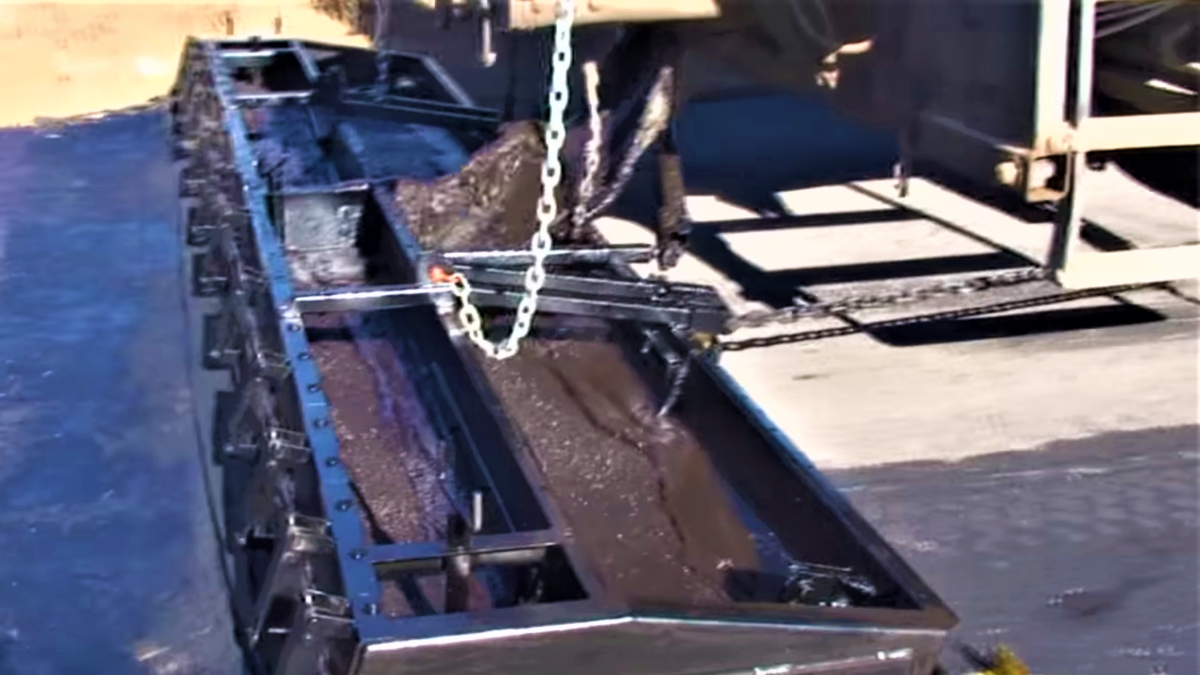Slurry is a combination or mixture of slow set bitumen emulsion , crusher dust with the addition of cement and water.
Application
It may be used to seal cracks,to provide a more even riding surface or a base for further treatment,before application, pothole and depression to be filled with proper bituminous material.
Material requirements
Aggregates:Suitable aggregate for slurry is graded crusher dust which is clean and free of any clay particles or organic materials.The crusher dust should comply with the specifications as stated in IS-383.A typical grading for suitable crusher dust is shown in the table below.Table 500-33 MORT&H
Sieve Size % Passing
9.5 100
4.75 90-100
2.36 65-90
1.18 45-70
0.600 30-50
0.300 18-30
0.150 10-21
0.075 5-15
Quantity of residual binder :Percentage by mass of aggregate should be 7.5 – 13.5
Water : Water shall be of such quality that the bitumen will not separate from the emulsion before the slurry seal is in place. The pH of the water must lie in the range 4 to 7.
Bitumen Emulsion : The emulsified bitumen shall be a Cationic rapid setting type as approved by the Engineer, conforming to the requirements as per IS: 8887.Slow setting bitumen emulsion is recommended .
Plant & Equipment Requirement :
Below is the list of plant required to mix and lay 5m3 or 700m² of slurry per day practically.
Item Number of items
Concrete mixer (0.3 m³) 1
Wheel barrows 3
Shovels 5
Pick 1
Containers (25 litres) 5
Container (1 litre) 1
Rubber squeegees 5
Hessian sheet (2m x 1.5m) 1
Watering can 1
Rope (10 mm diameter and 100m length) 1
Labour requirements
Below is the typical composition of a slurry team necessary to mix and lay 5m3 or 700m² per day.
Activity Number of workers
Loading of crusher dust 2
Concrete mixer operator 1
Pushing wheelbarrows 3
Loading emulsion and water 2
Spreading with squeegees 3
Sweeping 1
Traffic Control 2
Construction
Site Preparation
Slurry should be applied during the day, only in fair weather conditions. Repairs to potholes and depression should have been done prior to resealing with slurry.The surface on which the slurry is to be applied must be thoroughly swept and free of any debris.The surface must be dampened slightly before the slurry is applied.
Mixing by hand
The mix proportions will vary depending on the source and grading of the crusher dust .Before laying the slurry , a trial mix test should be carried out in a small container.Can be adust with water The typical mix proportions are as follows:
Material By (Agg)% % by mass(Overall)
Bitumen emulsion 13.5 10.5
Crusher dust 100 77.5
Cement 1.5 1
Water 14 11
Total (dry) 129 100
Remarks: % are shown with respect to crusher dust(100%) in 1st column and in 2nd column overall % has been given.
Work Sequences
The following mixing sequence is recommended to obtain a homogenous slurry mixture:
Step 1: Pre-wet the concrete mixer drum with approximately 5 litres of water
Step 2: Add the crusher dust into the concrete mixer
Step 3: Add the cement into the concrete mixer
Step 4: Mix the contents
Step 5: Pour water into the concrete mixer
Step 6: Mix again
Step 7: Pour in emulsion
Step 8: Mix contents
The emulsion must be at ambient temperature. To improve workability of the slurry, a controlled quantity of additional water should be added until the slurry has a creamy consistency . The water quantity will vary depending on the type of aggregate source its moisture content and prevailing air temperature.
Laying by hand
Slurry can be applied in a layer thickness of 4 mm-5mm.. A rope may be used to ensure straight edges and to control the cover thickness.
For instance to obtain a layer depth of 5 mm slurry, a 10mm diameter rope should be used.
After mixing, the slurry is transported in wheelbarrows to the point of application. The slurry is thenremixed on the road surface and spread with squeegees to obtain a uniform consistency and thickness.
The newly applied slurry layer is finished by dragging a wet hessian sheet over it to achieve a uniformly textured surface.If required rolling can be done with PTR depend upon condition
Traffic control
Slurry takes approximately four hours to set and dry properly under favourable weather conditions and no traffic should be allowed onto the freshly laid slurry before it has dried sufficiently. A suitable means of assessing this is to check whether the slurry can withstand the turning force of a shoe heel under a person’s weight without scuffing.
Quality control
Before construction commences the mix components should be mixed in their predetermined proportions in a small container to determine their compatibility. The resultant mix should be shaped into a patty and allowed to dry in the sun for a visual inspection.
The following tests should be carried out on site during the execution of the works:
- Daily: Bulking test on the crusher dust to determine whether the mix proportions require adjustment.
- When the water source is changed, dilute the emulsion 50:50 with the water in a glass container to check whether the fluids are compatible.
The key variables that must be checked regularly are the grading of the crusher dust being supplied and the binder content of the final slurry mixture. To this end samples of the crusher dust and wet slurry mixture should be tested in a soils laboratory.

